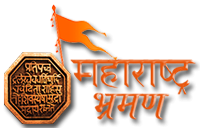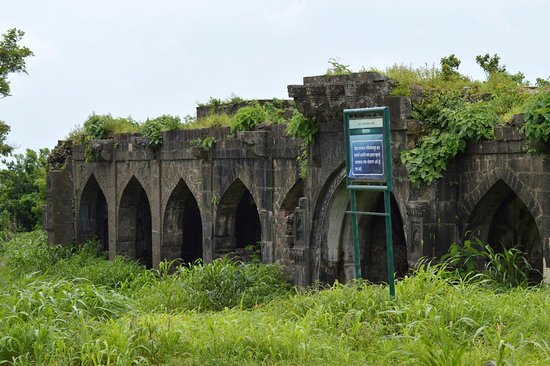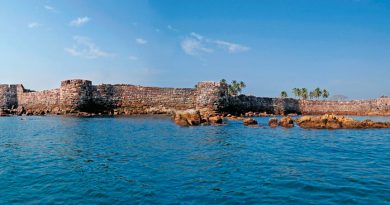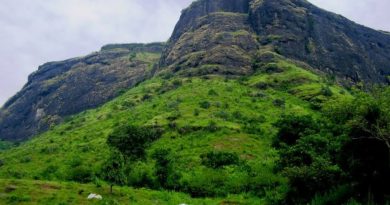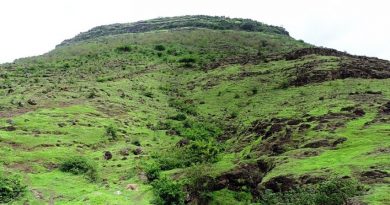Narnala Fort
Narnala also known as “Shahanur Fort” is an Indian hill fortress in Maharashtra, India. The name Narnala was given after the Rajput Ruler Narnal Singh or Narnal Swami. The fort was built in 10 A.D. by Gond Kings. In 15th Century Mughals have occupied and rebuild the fort and hence it has been called Shahnoor Fort. Narnala was one of the thirteen sarkar of Berar Subah. Narnala consists of three small forts named Zafarabad fort (or Jafarabad) on the east, Narnala in the centre and Teliagarh on the west.
After his expedition across the Gangetic plains in 1017, of Al-Biruni to compose his Tarikh Al-Hind in order to understand the Indians and their beliefs.
The Narnala fort / Shahnoor fort built by the Sultan Mahmoud Gazhnavi because he is a follower of Bagh-sawar wali Hazrat Burhanuddin the maintain after Imad shahi dynesty and after this Akbar invaded Berar maintained by Mughals. Mughals recreated the Narnala Fort with Mughal architecture and built mosque at the fort.By his killedar, Shah Dulha Rehman Ghazi of Ellichpur (now Achalpur) was maternal cusion of sultan Mehmoud Ghaznavi and maternal grand son of sultan Nasiruddin Alaptagueen he was marched for battle against rajah Eil.Through the route of Shahnoor fort he was stay here threefold night and pray Ahmad Shah Bahamani got the fort repaired around 1425 when he constructed Gavilgad with a view to obstructing the invaders from the north frontier of his kingdom. Nearly all the present buildings seem to be of Muhammedan origin. The fort passed on to Fatehulla Imad-ul-mulk when he became an independent ruler by 1490 as he was the Subhedar of Berar under the Bahamanis. Gavilgad also passed on to him. Burhan Imad Shah was imprisoned on this fort by one of his Amirs Tufalkhan who crowned himself. In the battle that was fought between Tufalkhan and Murtaza Nizam Shah in 1572 Tufalkhan was defeated and had to flee and took asylum with Muhammad Shah of Khandesh. On being threatened by Murtaza Nizam Shah of dire consequences if the asylum was continued, Muhammad Shah of Khandesh, refused to give refuge to Tufalkhan who was forced to return to Narnala fort and stay there. The fort was invested by the army of Murtaza. The fort surrendered and Tufalkhan and also Burhan Imad Shah were imprisoned along with 40 others. They were confined in the fort of Lohagad where they died while in captivity. Some historians say that all of them were poisoned under the orders of Murtaza Nizam Shah. After the battle that was fought between the armies of the Ahmadnagar kingdom and the Emperor Akbar on January 26, 1597 in which the armies of the Adilshahi Emperor who along with the Kutub Shah of Golconda was an ally of Nizamshah emerged successful. The fort can now ho ascended by a motorable road. About halfway up it crosses first one and then another piece of level ground, each thickly sprinkled with Muhammedan tombs.
The path passes two other strong gateways and one slighter one before entering the heart of the fort, and climbs meanwhile to the uppermost glials. Between the last two gateways are the domed tombs of Bagh Savar Wali and Gaz Badshah. Wali, the former not only rode a tiger in his life but the old Gazetteer slates “even now a tiny white tiger may be seen at night going to and from his tomb.” Passing the last gateway one comes almost at once before the Ambar Bangala, the kacheri of former days
The exact date of construction is not known. The first fortifications, according to local legend, were made by Naryendrapun, a descendant of the Pandavas and at the time Emperor of Hastinapur (Delhi). It likely predates 1400 CE as Firishta -the Persian historian- records that Ninth Badshaha Shahbudeen Ahmad Shah I Wali (1422 CE to 1436 CE) during construction of the Gawilgarh fort, made repairs to Narnala fort when he camped at Achalpur (Elichpur) from 1425 to 1428. This would mean that the Narnala fort was constructed before Bahmani rule.
In 1437, when Nashir Khan the subhedar of Khandesh invaded Berar, the governor of the province (also called Khan-i-Jahan), remained loyal to his master, Ala-ud-din Ahmad Shah II (son of Ahmad Shah I Wali) and retreated to Narnala. He was besieged by disaffected nobles and Nashir Khan, but managed to break through the besieging force with help of Khalaf Hasan Basri who was sent by Ala-ud-din Ahmed Shah II. Nasir Khan was defeated.
In 1487 CE Narnala along with Gawilgarh came under the control of Fateh-ullah Imad-ul-Mulk, the founder of Imad shahi dynasty at Ellichpur (or Achalpur).
In 1572 Burhan Imad Shah (also of the Imad Shahi dynasty) was confined in Narnala by his minister Tufal Khan. This gave Murtaza Nizam Shah of Ahmadnagar a pretext to lay siege to the fortress. He captured both king and minister, subsequently putting them to death. Thus the fort passed into the hands of the Ahmednagar kings. In 1597-8, the fort was captured by Akbar’s officers, Saiyid Yusuf Khan Mashhad and Shaikh Abul Fazl, from the officer who held it for the Sultan of Ahmadnagar.[5] During Akbar’s rule, Narnala was one of the Sarkars of Berar Subah (see Berar Subah). Narnala was captured by Parsoji Bhosale in 1701 CE and remained with the Marathas till it was taken over by the British in 1803 CE.
Location:
It is a historical place since the Khilji Dynasty, and it was one of the Sarkar Subah Berar in the medieval period. The fort is known for the great Muslim saint Hazrat Burhanuddin “BAGH SAWAR WALI” and it is said that many white tigers were seen with the hazrat at that time. ADLI BEG or ATALU BEG erected many Arabic Scripts and the “TUP” named “KADAK BIJLI”. It is also the birthplace of Aurangzeb’s great grand son. Sardar Beg Mirza and Qader Beg Mirza were the hereditary descendant of Mughal Dynasty in the 18th century.They to stay near Argaon 9 km away from Hiwarkhed because Shah Beg Subedar of Berar was holding the fort. It is located in the Akot Taluka, Akola District, Berar (also called Amravati Division)at coordinates of 21o 15′ N and 77o 4′ E. The closest city is Akot which is 18 km away. It is at the southern most tip of the Satpura Hills at an elevation of 3161 feet(912 m) above sea level.[1] Currently, this area falls within the Melghat Tiger Reserve.
Major Features:
The fort covers an area of 362 acres (1.46 km2). It has 360 watchtowers, six large and twenty one small gates. The large gates are called the Delhi darvaza, the Sirpur darvaza, the Akot darvaza, and the Shahanur darvaza. The innermost of the three gate-ways is the Shahnur or Mahakali gate. It is built of white sandstone and is highly ornate. It is decorated with conventional lotus flowers, a rich cornice, and Arabic inscriptions, and flanked by projecting balconies with panels of stone lattice-work displaying considerable variety of design. It is considered an example of Sultanate style of architecture.[6] An inscription records the fact that the gate was built in the reign of Shahab-ud-din Mahmud Shah (Bahmani) by Fataullah Imad-ul-Mulk in 1486. A short verse from the Quran is also inscribed. The fort still display ” Ashtakamal” eight petals Lotus which was the symbol of Narnal Singh’s dynasty. These lotuses are visible on the mosques and many other places. Hence it is evident that Islamic rulers made changes in Narnal Singh’s original architectural construction and converted the place in Moghul form. It was impossible for any ruler to rebuild entire fort considering the geographical location of the fort.
It has an aqueduct and drains to catch rainwater. Along with 19 tanks, four of which are full throughout the year, this ensured a plentiful water supply to the fort residents.
How to Reach:
Akot is well connected by road with Akola, Telhara, Paratwada, Anjangaon, Daryapur, Murtijapur and Amravati. Only meter gauge rail line is present in Akot connecting Akola Via Ratlam, Indore and Jaipur.
Akot is a railway station on Akola-Khandwa Meter Gauge Section of Hyderabad(HYB) Division of South Central Railway(SCR). After Divisional adjustments in 2003, which saw the bifurcation of Hyderabad Division, Akot now comes under Nanded(NED) Division of SCR. The section from Akola to Khandwa passing through Akot will be taken up for Gauge Conversion a little later.
